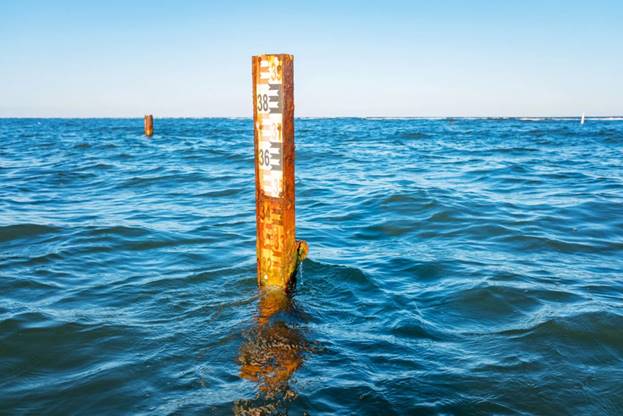

Scientists Sound Alarm as Growing Threat Looms over Coastal States: ‘We Are Preparing for the Wrong Disaster’
By Doric Sam
Scientists have issued a stern warning over the ongoing threat of rising sea levels caused by the ever-changing climate.
What’s happening?
A detailed report by The Washington Post revealed that coastal communities across eight states in the US are
facing “one of the most rapid sea level surges on Earth.” Since 2010, satellite data shows that the Gulf of Mexico has experienced twice the global average rate of rising sea levels, with more than a dozen tide gauges spanning from Texas to North Carolina registering sea levels that are at least six inches higher than they were 14 years ago.
While many understandably assume that extreme weather events like hurricanes are the source of these changes, experts revealed that rising water levels face a “newer, more insidious challenge” of accumulation caused by smaller-scale weather events.
“To me, here’s the story: We are preparing for the wrong disaster almost everywhere,” Rob Young, director of the Program for the Study of Developed Shorelines at Western Carolina University, told the Post. “These smaller changes will be a greater threat over time than the next hurricane, no question about it.”
The water level in Charleston, South Carolina, hit the fourth-highest mark since the city began keeping track in 1899, the Post reported, with the city’s average rising by seven inches since 2010. Jacksonville, Florida, has seen an increase of six inches during that period, but Galveston, Texas, experienced a full eight-inch increase across 14 years, the Post said.
Why is this concerning?
These rapidly increasing water levels are uncommon, and to make matters worse, experts believe they are here to stay even if the rate of the rise tapers off eventually.
“Since 2010, it’s very abnormal and unprecedented,” said Jianjun Yin, a University of Arizona climate scientist, in the Post’s report. “It’s irreversible.”
Rising global temperatures have caused warmer currents that cause water to expand. However, as the Post detailed, human-induced climate change caused by harmful gases and a lack of care for the environment have also contributed to these issues.
The rising levels have particularly impacted the state of Louisiana, according to the Post, where wetlands that are meant to act as somewhat of a barrier to catastrophic storms are now in what the Post said the scientists called “a state of ‘drowning.’” This issue would make the state more vulnerable to future major weather events.
Across the rest of the American South, the Post said, failing septic systems can lead to contaminated water sources. During big storms, roads can flood and leave residents in the community cut off from access to medical care and other important needs. To top it all off, many of these coastal states have previously made headlines as being “vulnerable” for home insurance
companies to raise rates, cancel plans, or leave entirely — with some insurance companies already long gone.
What can be done about it?
Officials are trying to figure out ways to combat these issues. In Galveston, for example, there is a plan to install pump stations using funding provided through federal grants, the Post reported.
We can help by taking steps to reduce our own carbon pollution, like switching to electric vehicles, supporting local food sources , choosing native species when planting, or volunteering for local cleanup projects in areas where rising sea levels pose a threat.
(Editor’s note: This article has been updated to provide clearer sourcing to The Washington Post for the information gathered in compiling this coverage. Washington Post)

